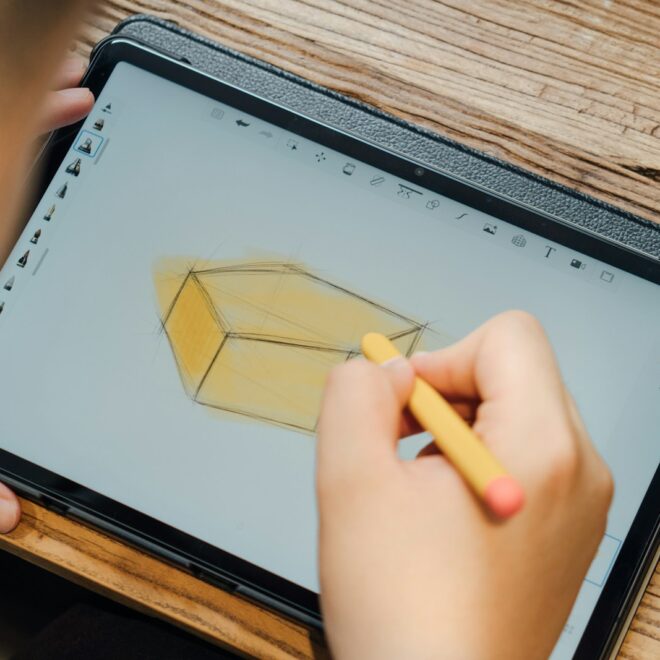- Class: Primary 6
- Term: 2nd Term
- Week: 2
- Age: 11 years
- Duration: 40 minutes
- Subject: Basic Science And Technology
- Curriculum Theme: Computer Studies
- Previous Lesson: Meaning of Drawing with a Computer
- Topic: Types of Computer Drawing Software
- Content: Identify different computer drawing software, Types of computer drawing software e.g. CorelDraw, Paint, Adobe Illustrator, etc.
Performance Objectives
By the end of the lesson, pupils should be able to:
- Cognitive Domain: Identify and list different types of computer drawing software.
- Affective Domain: Appreciate the importance of using digital tools for drawing.
- Psychomotor Domain: Demonstrate how to open and navigate basic features of drawing software.
- Social Domain: Work in pairs to discuss and explore the uses of different drawing software.
Reference Materials
The following resources were used in planning this lesson:
- 9 – Years Basic Education Curriculum
- Abuja Educational Resource Centre Scheme of Work
- NAPPS National Unified Scheme of Work
- Online Information from: Wikipedia – Software
- Relevant Textbooks
Instructional Materials
The teacher will teach this lesson with the aid of:
- A computer with installed drawing software
- Projector or interactive whiteboard (if available)
- Printed images of different drawing software interfaces
- Flashcards with names of drawing software
Rationale for the Lesson
Computer drawing software helps users create digital illustrations, designs, and graphics for various purposes. Learning about different types of drawing software helps pupils develop creativity and digital literacy, which are essential in today’s technology-driven world.
Prerequisite/Previous Knowledge
Pupils are familiar with the concept of drawing on paper and have been introduced to the meaning of drawing with a computer in the previous lesson.
Lesson Content
Types of Computer Drawing Software
Computer drawing software refers to programs that allow users to create digital drawings and illustrations. Some of these programs are used by graphic designers, artists, and students for different creative works. Below are some common types of computer drawing software:
- Microsoft Paint – A simple drawing tool that allows users to create basic drawings and edit pictures.
- CorelDraw – A professional vector graphics software used for designing logos, brochures, and posters.
- Adobe Illustrator – A powerful tool for creating vector illustrations and complex drawings.
- Krita – A free, open-source painting software used by artists for digital painting.
- Inkscape – A vector-based drawing software useful for designing scalable graphics.
- AutoCAD – A drawing tool used mainly for engineering and architectural designs.
- Tux Paint – A kid-friendly drawing program that helps young learners explore digital drawing.
Instructional Procedures
To deliver this lesson, the teacher will adopt the following steps:
| Content Development | Time | Teaching Method | Teaching Strategy | Teacher’s Activity | Pupils’ Activity | Learning Point |
|---|---|---|---|---|---|---|
| Step 1: Introduction | 5 mins | Set induction | Questioning and discussion | Asks pupils how they draw pictures and whether they have used a computer for drawing before. | Pupils respond and share their experiences. | recall prior knowledge. |
| Step 2: Explanation | 10 mins | Lecture and demonstration | Visual aids and examples | Introduces the concept of drawing software and explains its importance. | Listen attentively and take notes. | understand the meaning of drawing software. |
| Step 3: Listing of Software | 8 mins | Guided discovery | Listing and explanation | Displays different drawing software names and explains their features. | Identify and repeat the names of the software. | recognize types of drawing software. |
| Step 4: Demonstration | 7 mins | Practical activity | Hands-on learning | Opens Microsoft Paint and demonstrates basic drawing tools. | Observe and attempt to use the software. | understand how to use a drawing program. |
| Step 5: Note-taking | 5 mins | Writing | Individual task | Guides pupils to write down key points from the lesson. | Copy the lesson notes in their notebooks. | reinforce learning by writing. |
| Step 6: Evaluation | 3 mins | Oral questioning | Checking understanding | Asks pupils to name three types of drawing software and their uses. | Answer the teacher’s questions. | recall and apply knowledge. |
| Step 7: Conclusion | 2 mins | Summary | Wrap-up discussion | Summarizes key points and relates them to real-life applications. | Listen and ask final questions. | consolidate learning. |
Lesson Evaluation
To evaluate the learning, the teacher asks pupils to:
- Define computer drawing software.
- Mention two examples of computer drawing software.
- Identify which software is best for vector graphics.
- Demonstrate how to open and use basic tools in Paint.
- Explain why drawing software is useful in design.
Differentiation
- For advanced learners, provide additional tasks like experimenting with more features in Paint.
- For struggling learners, provide step-by-step guidance on how to use drawing tools.
Note for Teachers Using This Lesson Plan
Encourage pupils to explore drawing software beyond the classroom. If a projector or computer is unavailable, use printed images of software interfaces for illustration. Ensure an interactive and engaging class. Happy teaching!

